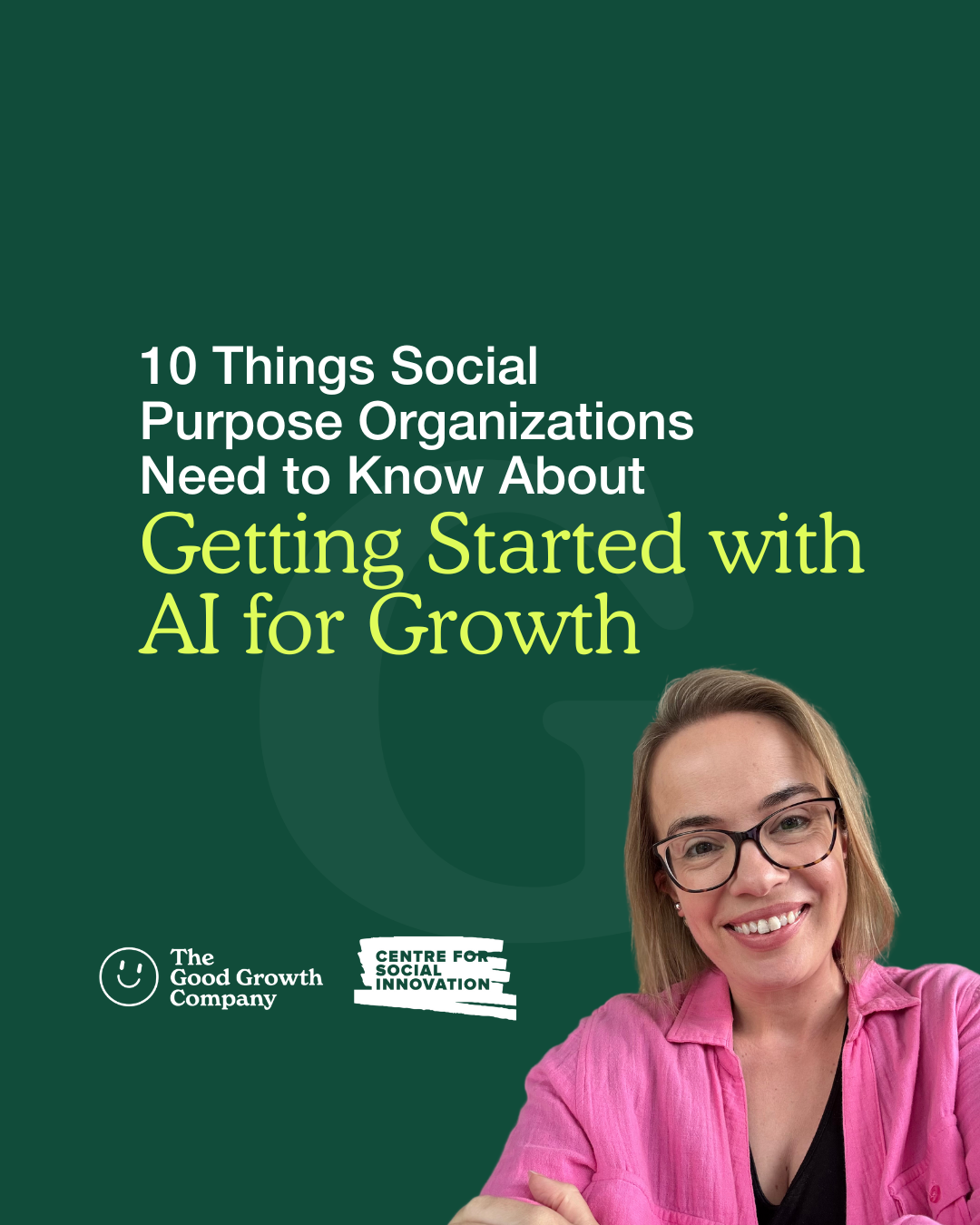How to Get Started Using AI for Growth in Social Good
10 Things You Need to Know About AI for Growth
AI is changing how we work. But what does that mean for your nonprofit team, your mission, and the future of fundraising?
That’s the question we explored during this special session of the 10 Things Series, featuring Robyn Greaves — co-founder of Pravi, an AI-powered platform helping nonprofits grow their donor base. Robyn brought practical advice, ethical grounding, and real use cases designed to help nonprofit professionals understand how to confidently get started with AI — without the overwhelm or the hype.
Whether you’re curious about AI but unsure where to begin, or feeling pressure to keep up while your organization is still catching up, this session was all about cutting through the noise and focusing on impact.
Top Takeaways
1. You're Not Behind — Everyone's Still Figuring It Out
Despite all the hype, Robyn reminded us: you’re not late to the AI game. AI is evolving rapidly, and the learning curve is ongoing for everyone. The key is to stay curious, schedule time to explore, and commit to learning a little at a time.
2. AI Isn’t Magic — It’s a Tool
AI is like a really fast, slightly clueless intern — helpful, but only when given clear direction. The better the input, the better the output. Think of it like predictive text, just much more powerful.
3. You Don’t Need to Be “Good at Tech”
You need to be good at communicating. AI tools like ChatGPT respond best to clear, well-structured instructions. Your communication skills matter more than your tech skills.
4. Start With Your Problems, Not the Tech
Don’t chase shiny tools. Instead, identify what you actually need help with. Where are you spending time and energy? Then explore AI tools that support those specific tasks — like meeting notes, email drafts, or social media planning.
5. Talk to Your Team First
Adopting AI should start with conversation, not software. Understand how your team feels about AI, where they’re spending their time, and where support is needed. A great idea: start “AI Fridays” — casual team learning sessions where everyone shares tools, tips, and experiments.
6. Policies Matter — But Make Them Simple
AI policies don’t need to be 20 pages long. Focus on core principles like transparency, consent, and human oversight. Co-create these policies with your team to align with your mission and foster responsible use.
7. Know the Difference Between Personal and Anonymous Data
Protect sensitive donor and stakeholder data at all costs. But don’t be afraid to use behavioral or anonymous data to make better decisions — like email open rates or Instagram analytics. This kind of data helps AI tools give you more relevant results.
8. AI Isn’t “Cheating” — It’s Resourceful
For time-strapped teams, AI can remove repetitive admin tasks, freeing up space for creative, strategic, and relationship-based work. Don’t think of it as replacing people — think of it as making space for more meaningful human impact.
9. You Don’t Need a Big Vision to Get a Big Win
Start small. Try one tool. Solve one task. Build confidence and momentum from there. One easy starting point: create a shared prompt library your team can use and expand together.
10. If You’re Confident, Share It
AI literacy is a privilege. If you’ve figured something out, don’t gatekeep. Share prompts, post tips on LinkedIn, and help others upskill. It’s how we ensure responsible, values-driven adoption across the sector.
Your Questions, Answered
The audience submitted questions on everything from donor prospecting to environmental ethics. Here are some of the insights Robyn shared:
Q: How can small nonprofits evaluate AI tools without wasting resources?
Start by tracking your time. Look for tools that save you time in repetitive tasks. Evaluate based on real outcomes, not trends.
Q: How can AI support donor prospecting?
Use tools like Perplexity to research potential donors or corporate partners based on specific criteria. After discovery calls, AI note takers can help analyze sentiment and action items for better follow-up.
Q: Can fundraisers use AI for personal prospect management?
Yes — AI can help with donor research, email drafting, creating follow-up checklists, and formalizing meeting prep. ChatGPT can be your thought partner for outlining next steps and structuring communications.
Q: What about AI’s environmental impact?
Use AI intentionally — just like you would decide whether a flight is worth it. Make strategic choices. And remember, AI providers are working toward more sustainable infrastructure.
Q: What’s a low-risk, high-reward way to get started?
Use ChatGPT to draft documents, outlines, and emails — especially when you’re starting from a blank page. Save chats for ongoing use and build context over time to improve accuracy.
Q: How can nonprofits develop ethical AI policies?
Keep it simple. Define what’s acceptable, what tools are allowed, and what data is off-limits. Make sure your team is educated and aligned.
Q: How can AI help with content creation?
From email newsletters to donor updates, AI tools can create solid first drafts. Tools like Canva and Captions.ai can also help teams with limited capacity produce quality visuals and video content.
Recommended Resources
ChatGPT – Thought partner, idea generator, writing assistant
Perplexity – AI-powered search engine with citations
Fireflies.ai – AI meeting note-taker
Captions.ai – Short-form video editing and auto-captioning
Canva (Pro for Nonprofits) – Graphic design with AI features built in
What's next?
AI isn’t something to fear — it’s something to explore with intention. For social purpose organizations, it offers a powerful opportunity to reduce overwhelm, streamline workflows, and make space for more human-centered impact.
Whether you're an AI skeptic or an early adopter, the key takeaway from this session is simple: Start small. Stay curious. Share what you learn.
Want to revisit this session or share it with your team?
Recordings are available in our membership at thegoodgrowth.company/membership
Explore more sessions in the 10 Things Series: thegoodgrowth.company/journal/10things-series

